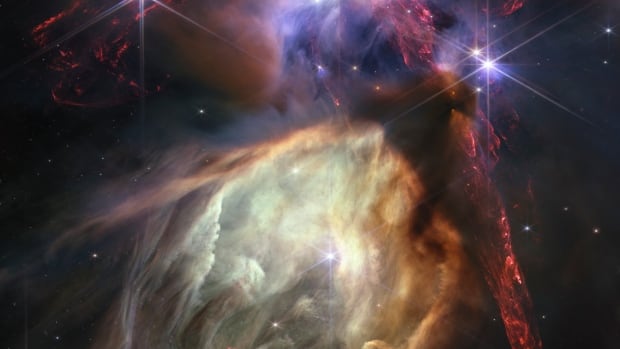[ad_1]
The James Webb Space Telescope is marking one year of cosmic photographs with one of its best yet: the dramatic close-up of dozens of stars at the moment of birth.
NASA unveiled the latest snapshot Wednesday, revealing 50 baby stars in a cloud complex 390 light-years away. The region is relatively quiet yet full of illuminated gases, jets of hydrogen and even cocoons of dust with the delicate beginnings of even more stars.
All of the young stars appear to be no bigger than our sun. Scientists said the breathtaking shot provides the best clarity yet of this brief phase of a star’s life.
“Our own sun experienced a phase like this, long ago, and now we have the technology to see the beginning of [another] star’s story,” Klaus Pontoppidan, who served as project scientist, said in a statement.
Planets in the making?
This cloud complex, known as Rho Ophiuchi, is the closest-star forming region to Earth. With no stars in the foreground of the photo, NASA noted, the details stand out all the more. Some of the stars display shadows indicating possible planets in the making, according to NASA.
Webb — the largest and most powerful astronomical observatory ever launched into space — has been churning out cosmic beauty shots for the past year. The first pictures from the $10 billion US infrared telescope were unveiled last July, six months after its liftoff from French Guiana.
It’s considered the successor to the Hubble Space Telescope, orbiting Earth for 33 years. A joint NASA-European Space Agency effort, Webb scans the universe from a more distant perch, 1.6 million kilometres away.
[ad_2]
Source link




